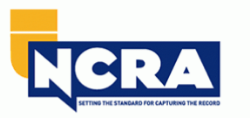Understanding Trial Presentation: Tips for Engaging and Persuasive Court Room Strategies
In the realm of trial discussion, the ability to engage and convince is extremely important. The difficulty lies in seamlessly integrating them right into a natural discussion. What techniques can genuinely raise a test presentation from normal to extraordinary?
Understanding Your Target Market
To properly understand trial presentation, it is important to comprehend your target market. In the court, your target market primarily is composed of jurors, the court, and opposing advice. Each team has distinct point of views, experiences, and biases that can influence their reception of your arguments. Jurors, as an example, are tasked with translating evidence and developing facts based on their personal beliefs and values. Recognizing their demographics, backgrounds, and prospective predispositions can help customize your discussion to resonate with them effectively.

An awareness of the judge's preferences and court decorum is similarly essential, as it can impact the circulation of your discussion. Judges might focus on brevity and clarity, so offering your case in a simple manner can enhance your integrity. Furthermore, identifying the opposite advise's strategies can help in preparing counterarguments that properly address their factors.
Inevitably, understanding your audience enables you to involve them much more properly, cultivating connection and persuasion throughout the test (trial presentation). By leveraging understandings regarding their motivations and assumptions, you can produce an engaging discussion that reverberates and eventually affects the result of the case. This fundamental expertise is important for any lawyer aiming to attain success in the court
Crafting a Compelling Narrative
A well-crafted story serves as the backbone of an effective test presentation, leading the target market through the complexities of the case. This narrative ought to be structured to involve jurors emotionally and intellectually, making the realities relatable and reasonable. By weaving together the aspects of the case-- such as the timeline, key occasions, and essential statements-- attorneys can produce a systematic story that reverberates with jurors.
To accomplish this, it is vital to identify the main styles that will drive the story. Lawyers must focus on the inspirations and objectives of the celebrations included, illustrating the human elements of the instance (trial presentation). This strategy not only maintains juror interest but likewise cultivates compassion, leading them to connect personally with the story
Each segment of the narrative should build towards an engaging orgasm, finishing in an influential conclusion that reinforces the case's core message. Eventually, a strong narrative not just makes clear the issues at hand however also produces an enduring impression that can influence the end result of the trial.
Utilizing Aesthetic Aids Successfully
How can visual help boost the efficiency of a test presentation? Aesthetic aids function as powerful devices that can dramatically improve juror understanding and retention of complicated information - trial presentation. When utilized attentively, they can make clear bottom lines, show connections, and stress vital proof that supports the situation narrative
Efficient visual help include charts, charts, timelines, and pictures, which can streamline elaborate information and offer context. As an example, a timeline can succinctly communicate the sequence of events, while a graph can highlight statistical details in an aesthetically interesting way. The strategic use of multimedia presentations can additionally boost involvement and maintain juror passion throughout the trial.
In addition, aesthetic help my website can aid to stimulate emotional reactions, strengthening the human aspects of a case. By presenting photos or video clips pertinent to the situation, lawyers can develop an extra compelling and relatable story. It is important to make certain Discover More Here that visual help are professionally created and not overly intricate, as this can lead to confusion rather than quality.
Involving Body Language Strategies
Aesthetic aids are not the only tools that can boost the performance of a trial discussion; engaging body movement strategies additionally play an important function in catching juror focus and conveying self-confidence. A presenter's nonverbal signs can considerably influence jurors' assumptions and responses, making it vital to grasp these techniques.

In addition, varying your singing tone and rate can boost your narration, making it much more engaging. Stopping briefly tactically enables jurors to absorb important info and signals the relevance of what you are stating. Last but not least, moving purposefully within the court can assist reinforce your factors, offered it does not distract from your message.
Including these body language methods will certainly not only enhance your courtroom visibility but also cultivate a more influential link with jurors, eventually adding to the success of your test presentation.
Practicing for Influence
Effective test presentations pivot not just on the content but likewise on the shipment, making method important for impact. The importance of wedding rehearsal can not be overstated; it permits attorneys to refine their arguments and establish a powerful existence in the courtroom. Participating in purposeful method aids attorneys to determine their strengths and weak points, allowing them to readjust their pacing, tone, and body language accordingly.
To practice for influence, imitate trial conditions as closely as possible. This includes making use of visual help, practicing in front of associates, and getting constructive responses.

Verdict
Understanding test discussion entails a complex method that combines target market understanding, narrative growth, visual aids, and body language. Extensive method in substitute setups further strengthens these strategies, making certain that each discussion reverberates and leaves a long-term impact on the court.